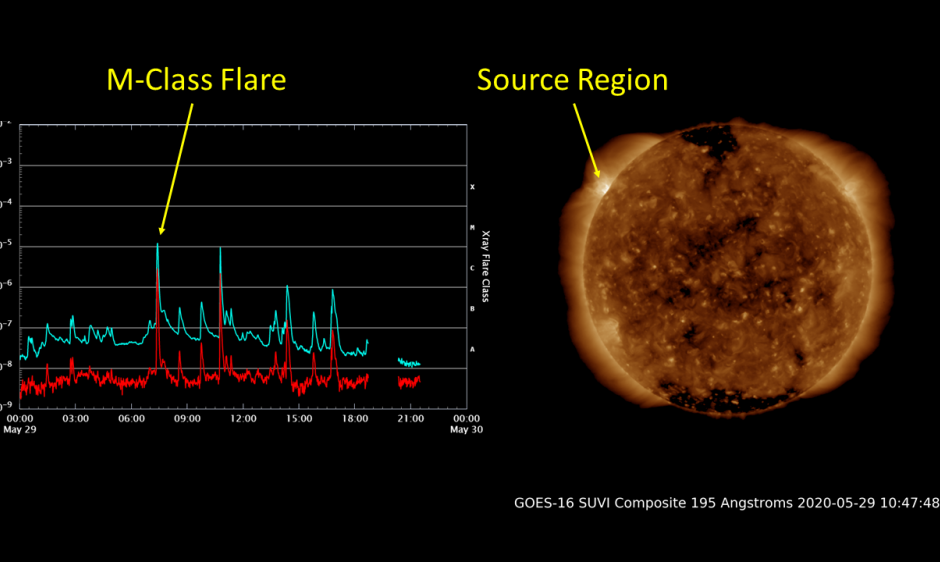
First M-Class Flare Observed In Years
For the first time since 20 Oct 2017, an M1 (R1-Minor) X-ray flare was observed from the Sun. The region that produced the flare was located just around the NE limb. Although the flare activity has been impulsive, several coronal mass ejections (CME) have been observed from the region in coronagraph imagery. Given the location near the limb, none of the CMEs are expected to be Earth-directed. As the region rotates further onto the visible disk we'll be able to gather more details about its magnetic complexity and future flare potential.